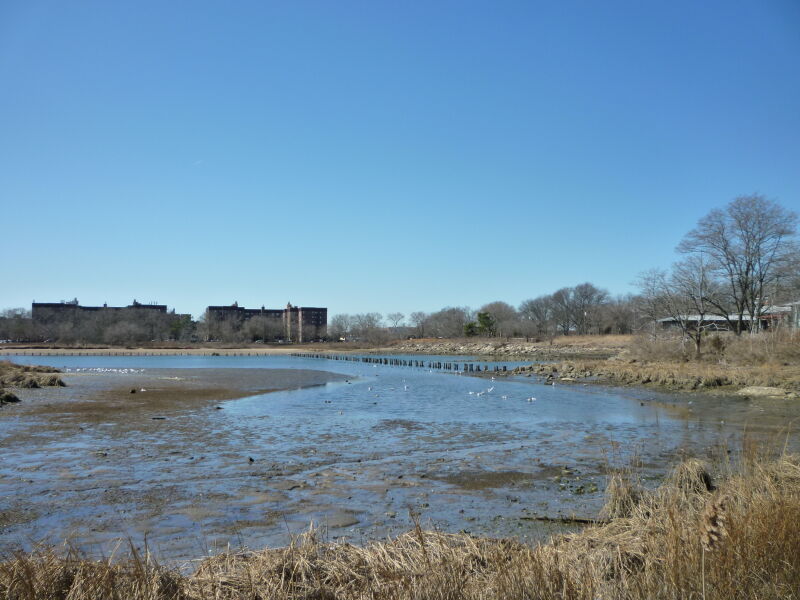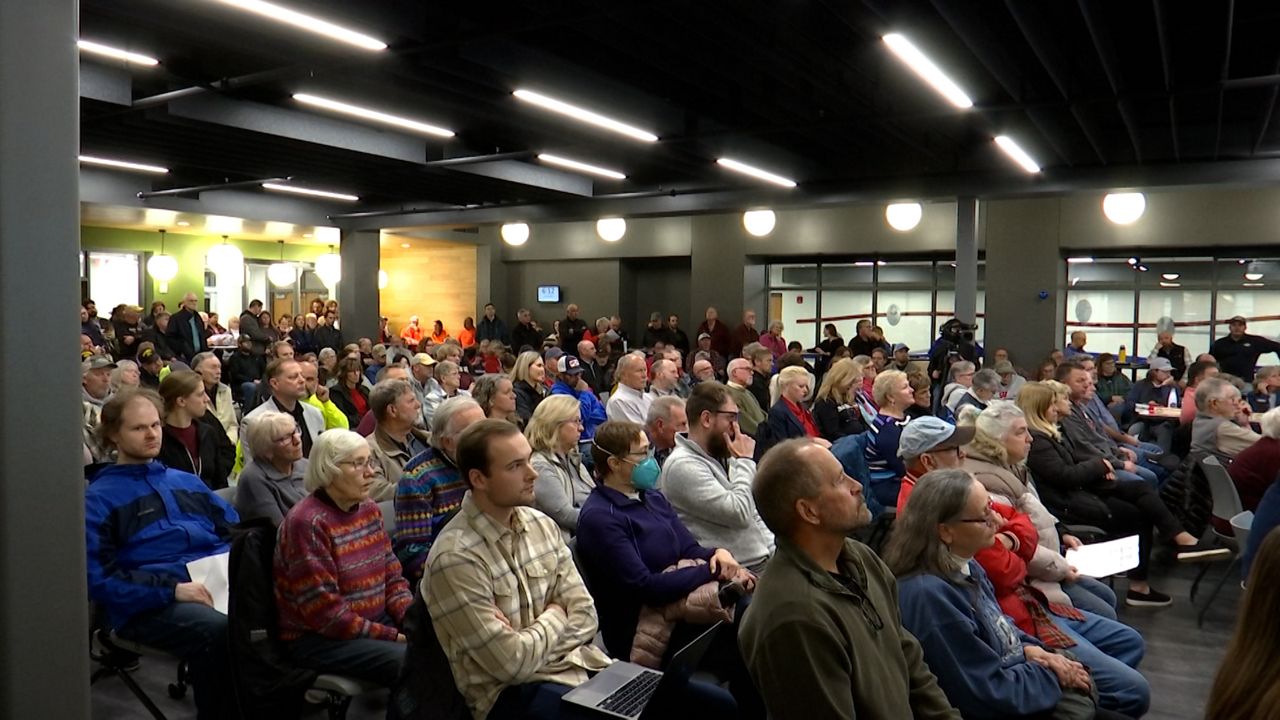City Completes $7 Million Wetland Improvement Project in Brooklyn’s Four Sparrow Marsh – NYC.gov

Report on the Restoration of Four Sparrow Marsh and its Contribution to Sustainable Development Goals
Project Overview
- Project: Restoration of Four Sparrow Marsh
- Location: Mill Basin, Brooklyn, New York City
- Date of Completion: July 31, 2025
- Budget: $7 million
- Area Restored: Nearly three acres of tidal wetland
- Lead Agencies: NYC Department of Environmental Protection (DEP), NYC Parks, NYC Department of Design and Construction (DDC)
Scope of Work and Environmental Remediation
- Restoration and rehabilitation of tidal wetland to improve natural conditions and ecological functions.
- Excavation and removal of over 9,000 tons of non-hazardous and contaminated soil to reverse land degradation.
- Application of clean sand and loamy soil, fine-graded to create a suitable foundation for a healthy wetland.
- Reintroduction of native flora to enhance local biodiversity and ecosystem stability.
Biodiversity and Ecosystem Enhancement
The project significantly bolstered local biodiversity through extensive planting of native species critical to the salt marsh ecosystem. This action directly supports the restoration of habitats for local and migratory wildlife.
- Trees Planted: 50
- Shrubs Planted: 255
- Herbaceous Plants: Nearly 40,000 plugs and quarts
- Key Species Introduced: Spartina alterniflora, Prunus maritima, Myrica pennsylvanica, Spartina patens, Distichlis spicata, and salvaged native marsh hummocks.
Alignment with UN Sustainable Development Goals (SDGs)
The Four Sparrow Marsh restoration project makes direct and significant contributions to several key Sustainable Development Goals, reinforcing New York City’s commitment to a sustainable and resilient future.
- SDG 14 (Life Below Water) & SDG 15 (Life on Land): The project is a primary example of action taken to protect, restore, and promote the sustainable use of coastal and terrestrial ecosystems. By rehabilitating the wetland, the initiative improves the ecosystem health of Jamaica Bay, halts biodiversity loss by reintroducing native flora, and restores critical habitats for wildlife, including various bird species and diamondback terrapins.
- SDG 6 (Clean Water and Sanitation): Restored wetlands act as natural filters, improving water quality by processing pollutants. This project enhances the health of Jamaica Bay, a vital water body, contributing to cleaner water for the surrounding ecosystem.
- SDG 11 (Sustainable Cities and Communities) & SDG 13 (Climate Action): The restoration strengthens urban resilience against the impacts of climate change. Healthy salt marshes serve as natural infrastructure, providing a critical buffer against coastal flooding and extreme weather events. This makes the Mill Basin community and the city more resilient, safe, and sustainable.
Inter-Agency Collaboration and Objectives
The project’s success was achieved through a strategic partnership between key New York City agencies, each contributing to the shared goal of environmental restoration.
- NYC Department of Environmental Protection (DEP): Provided the $7 million in funding, with a focus on protecting the overall health and water quality of the Jamaica Bay ecosystem.
- NYC Department of Design and Construction (DDC): Managed the capital construction, ensuring the project effectively remediated the site and prevented further degradation of the wetland.
- NYC Parks: As steward of the land, the agency collaborated to ensure the restoration aligned with long-term goals for preserving natural areas, protecting coastlines, and providing vital habitats for urban wildlife.
SDGs Addressed in the Article
- SDG 6: Clean Water and Sanitation – The project’s primary goal is to improve the health of Jamaica Bay by restoring a tidal wetland, which is a critical water-related ecosystem. The involvement of the NYC Department of Environmental Protection (DEP), which manages the city’s water supply and wastewater, further links the project to this goal.
- SDG 11: Sustainable Cities and Communities – The restoration takes place within New York City, enhancing urban green space (Four Sparrow Marsh Park). The article notes the project provides “environmental and recreational benefits” to the Mill Basin community and contributes to making the city “more livable and more resilient.”
- SDG 13: Climate Action – The article explicitly mentions that salt marshes are critical for “protecting our coastline in the face of extreme weather,” which directly relates to climate change adaptation and strengthening resilience against natural disasters.
- SDG 14: Life Below Water – The project focuses on restoring a tidal wetland, which is a coastal ecosystem. The stated aim is to “improve the ecosystem health of Mill Basin, a tributary of Jamaica Bay,” directly contributing to the protection and restoration of marine and coastal ecosystems.
- SDG 15: Life on Land – The project involves the restoration of a marsh ecosystem, removal of contaminated soil, and extensive planting of native species. It aims to protect wildlife habitats for various birds and other animals like diamondback terrapins, thus halting biodiversity loss and restoring terrestrial ecosystems.
- SDG 17: Partnerships for the Goals – The project is a collaborative effort between multiple public entities (NYC DEP, NYC Parks, NYC DDC) and private contractors, demonstrating a multi-stakeholder partnership to achieve sustainability goals.
Specific SDG Targets Identified
-
SDG 6: Clean Water and Sanitation
- Target 6.6: “By 2020, protect and restore water-related ecosystems, including mountains, forests, wetlands, rivers, aquifers and lakes.” The project is a direct implementation of this target through the “restoration and rehabilitation of three acres of tidal wetland in Four Sparrow Marsh.”
-
SDG 11: Sustainable Cities and Communities
- Target 11.5: “By 2030, significantly reduce… losses in the global economy relative to global gross domestic product caused by disasters, including water-related disasters…” This is addressed by the statement that restoring salt marshes is crucial for “protecting our coastline in the face of extreme weather.”
- Target 11.7: “By 2030, provide universal access to safe, inclusive and accessible, green and public spaces…” The project improves Four Sparrow Marsh Park, a public nature preserve, ensuring the community can “enjoy the environmental and recreational benefits of this unique landscape.”
-
SDG 13: Climate Action
- Target 13.1: “Strengthen resilience and adaptive capacity to climate-related hazards and natural disasters in all countries.” The project strengthens the resilience of the NYC coastline by restoring a natural buffer (salt marsh) against extreme weather events.
-
SDG 14: Life Below Water
- Target 14.2: “By 2020, sustainably manage and protect marine and coastal ecosystems… and take action for their restoration…” The project is a direct action for the restoration of a coastal ecosystem (tidal wetland) to improve the health of Jamaica Bay.
-
SDG 15: Life on Land
- Target 15.1: “By 2020, ensure the conservation, restoration and sustainable use of terrestrial and inland freshwater ecosystems and their services, in particular forests, wetlands…” The project is a textbook example of wetland restoration.
- Target 15.5: “Take urgent and significant action to reduce the degradation of natural habitats, halt the loss of biodiversity and… protect and prevent the extinction of threatened species.” The project protects vital habitats for species like “salt marsh sparrows and diamondback terrapins” and various birds, directly addressing habitat degradation and biodiversity loss.
-
SDG 17: Partnerships for the Goals
- Target 17.17: “Encourage and promote effective public, public-private and civil society partnerships…” The project’s success relies on the collaboration between three distinct city agencies (DEP, Parks, DDC) and private contractors (Galvin Bros., Inc./Madhue Contracting, Inc., etc.), showcasing an effective public-private partnership.
Indicators for Measuring Progress
-
For Targets 6.6, 14.2, and 15.1 (Ecosystem Restoration)
- Area of wetland restored: The article explicitly states that “nearly three acres of wetland” were restored. This is a direct quantitative indicator of progress.
- Volume of contaminated material removed: The removal of “over 9,000 tons of non-hazardous and contaminated soil” is a measurable indicator of the cleanup and restoration effort.
- Number and diversity of native species planted: The article provides specific numbers: “50 trees, 255 shrubs, and nearly 40,000 herbaceous plant plugs and quarts were planted,” along with names of species like Spartina alterniflora. This indicates the scale and ecological focus of the revegetation.
-
For Target 15.5 (Biodiversity and Habitat)
- Protection of specific habitats: The article implies progress by noting the project protects habitats for named species such as “salt marsh sparrows,” “diamondback terrapins,” “bobolinks, snipe, and little blue herons.” Future monitoring of these populations could serve as a long-term indicator.
-
For Target 17.17 (Partnerships)
- Number and type of partners involved: The article identifies a partnership between three public agencies (DEP, Parks, DDC) and multiple private contractors, which serves as an indicator of a multi-stakeholder collaboration.
Summary of SDGs, Targets, and Indicators
| SDGs | Targets | Indicators |
|---|---|---|
| SDG 6: Clean Water and Sanitation | 6.6: Protect and restore water-related ecosystems. | Area of wetland restored (nearly 3 acres). |
| SDG 11: Sustainable Cities and Communities | 11.5: Reduce losses from water-related disasters. 11.7: Provide access to green and public spaces. |
Restoration of a coastal marsh that protects from extreme weather; Improvement of Four Sparrow Marsh Park for community benefit. |
| SDG 13: Climate Action | 13.1: Strengthen resilience and adaptive capacity to climate-related hazards. | Restoration of salt marshes for “protecting our coastline in the face of extreme weather.” |
| SDG 14: Life Below Water | 14.2: Protect and restore marine and coastal ecosystems. | Restoration of a tidal wetland to improve the health of Jamaica Bay. |
| SDG 15: Life on Land | 15.1: Conserve and restore terrestrial and inland freshwater ecosystems. 15.5: Halt biodiversity loss. |
Number of native species planted (50 trees, 255 shrubs, ~40,000 plants); Protection of habitats for named species (sparrows, terrapins, herons). |
| SDG 17: Partnerships for the Goals | 17.17: Encourage effective public, public-private partnerships. | Collaboration between 3 city agencies (DEP, Parks, DDC) and private contractors. |
Source: nyc.gov

What is Your Reaction?
 Like
0
Like
0
 Dislike
0
Dislike
0
 Love
0
Love
0
 Funny
0
Funny
0
 Angry
0
Angry
0
 Sad
0
Sad
0
 Wow
0
Wow
0


-1920w.png?#)






































































